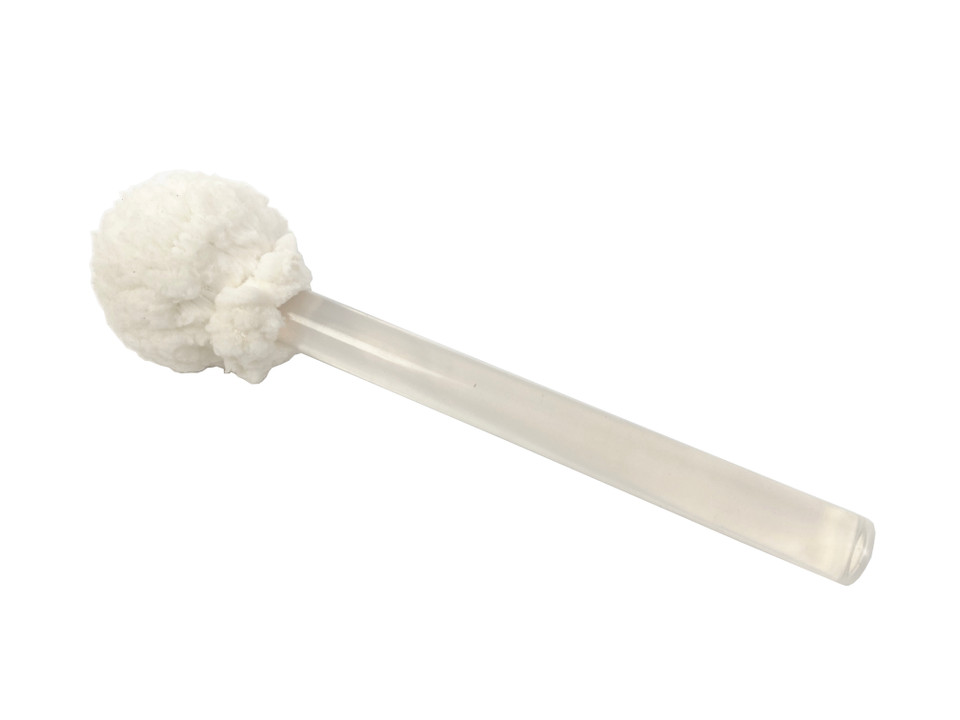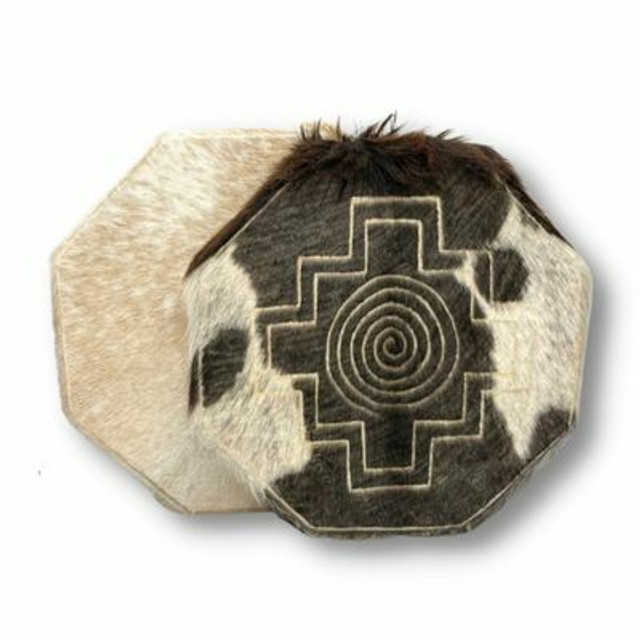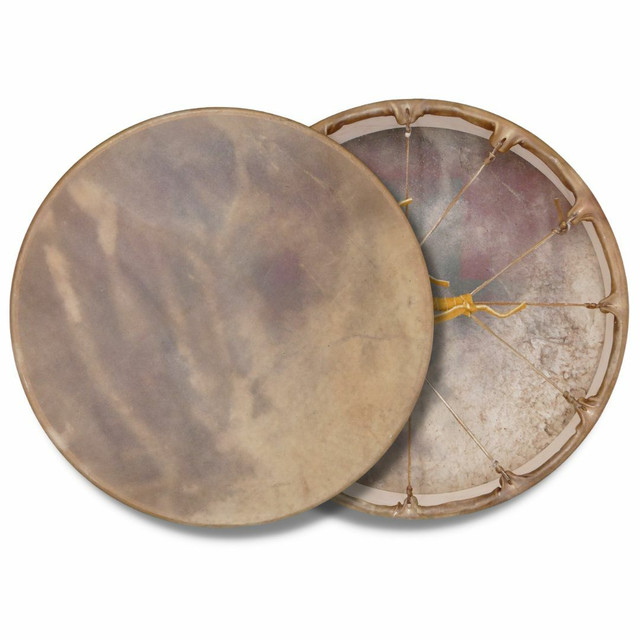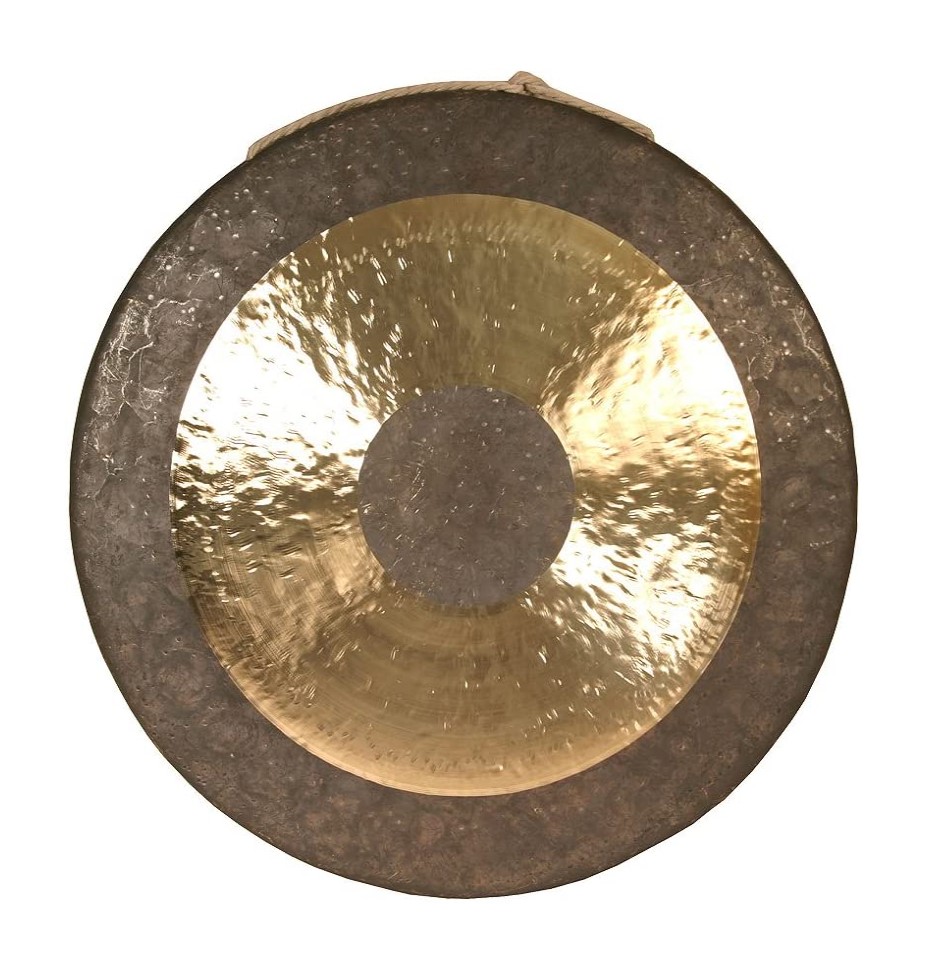Guide To Purchasing A Gong
Table Of Contents
2) What Are The Different Types Of Gongs?
3) What Gong Should You Buy For Sound Healing?
4) What Mallet Should I Buy For My Gong?
5) How To Use A Gong / How Are Gongs Played?
6)How Are Gongs Made?
Edited 10.10.24 Jonathan Wood
What Is The Most Important Thing To Know When Buying A Gong?
Every gong sounds different. For example, a 28inch wind gong can be lower in tone than a 32inch wind gong. There are general differences in gongs, by size and type, as discussed in this article. Those are good to know, but really, every gong is a unique instrument with a unique tone. The most important thing when buying a gong really, is knowing the tone of the gong you are buying, and that it is going to fit your specific need for a gong. We can definitely help discuss how to use a gong. But also, you can see all of the individually listed gongs we have below, each individually recorded and photographed.
What Is The Purpose Of A Gong In Sound Healing Or Meditation
The Effect Of Gongs
The truth is, different styles of gongs have similar effects. When you strike a gong, multi-tonal vibrations cascade over you. In that moment the gong is a felt sensation of vibration, that ignites the nervous system, and draws attention into the body. When attention can seep into the body with a coherence, bodily tension and unconscious mental energy can be seen and released, which can help transform experience towards greater calm and understanding.
The gong is as well an auditory sensation of overtone harmonics and binaural effects. The sound bypasses the thinking mind on a physical level which can allow for the release of mental forms, allowing for expansion into deeper states of coherent awareness.
From a state of awareness, many will want to use the felt and auditory experiences of the gong to journey, while others would want to use the time to observe the mind. Others can use the time to set intention and manifest, while others would want to use the time to explore tension and let go. The beauty of the gong in all these cases is its vibratory power in overriding the thinking mind, and bringing attention more finely into the present moment.
Many different gongs can work. Explore below to learn about the different types of gongs, and learn about which can best suit your needs.
What Are The Different Types Of Gongs?
There are generally three different general shapes for gongs, and then variations within that. There are Wind style gongs, Chau style gongs, and Nipple style gongs. Then, within this, there are small variations in that type that may or may make no difference to the overall sound of the gong.
What Are Wind Gongs?
 Wind Gongs are hammered into almost complete flat disks, with just a small angle from the middle of the gong to the outside. They have no lip on the outer edge of the gong. Because of this, when you strike a wind gong, the vibration will make the gong shimmer and crash much easier than a gong that has a lip on the outside edge. Wind gongs have a deeper fundamental note than other gongs of the same size. So, if you are just striking the gong softly, you will get a deep soothing fundamental sound. Though once you start hitting the gong harder, it will go into a higher shimmering crash pretty easily. There is not much “room” to explore between the fundamental note and the higher crash. Examples of our Wind Gongs are our Chinese Wind Gongs and our Solar Flare gongs.
Wind Gongs are hammered into almost complete flat disks, with just a small angle from the middle of the gong to the outside. They have no lip on the outer edge of the gong. Because of this, when you strike a wind gong, the vibration will make the gong shimmer and crash much easier than a gong that has a lip on the outside edge. Wind gongs have a deeper fundamental note than other gongs of the same size. So, if you are just striking the gong softly, you will get a deep soothing fundamental sound. Though once you start hitting the gong harder, it will go into a higher shimmering crash pretty easily. There is not much “room” to explore between the fundamental note and the higher crash. Examples of our Wind Gongs are our Chinese Wind Gongs and our Solar Flare gongs.
What Are Chau Gongs?
 Chau gongs have a hammered lip around the outside of the gong. This lip stops the gong from crashing and shimmering as easily as a wind gong. Because of this, when you strike a Chau gong, it has a clear fundamental note, and as you continue to strike a Chau gong, the note builds slightly higher and higher with more and more harmonics. Eventually as you continue to strike the Chau gong harder there will be a shimmering crash, though there is “room” to explore between the deepest fundamental note of the gong and the higher crash. There are multiple levels of harmonics that come out in between the fundamental and crash. The Chau gong is by far the most popular style of gong. Examples of Chau style gongs are Chinese Chau Gongs, Mother Tesla Gongs, Atlantis Gongs, Paiste Planetary Gongs, Paiste Symphonic Gongs, Paiste Sound Creation Earth Gongs, and all of the Meinl Gongs offered on our site.
Chau gongs have a hammered lip around the outside of the gong. This lip stops the gong from crashing and shimmering as easily as a wind gong. Because of this, when you strike a Chau gong, it has a clear fundamental note, and as you continue to strike a Chau gong, the note builds slightly higher and higher with more and more harmonics. Eventually as you continue to strike the Chau gong harder there will be a shimmering crash, though there is “room” to explore between the deepest fundamental note of the gong and the higher crash. There are multiple levels of harmonics that come out in between the fundamental and crash. The Chau gong is by far the most popular style of gong. Examples of Chau style gongs are Chinese Chau Gongs, Mother Tesla Gongs, Atlantis Gongs, Paiste Planetary Gongs, Paiste Symphonic Gongs, Paiste Sound Creation Earth Gongs, and all of the Meinl Gongs offered on our site.
 What Are Nipple Gongs?:
What Are Nipple Gongs?:
Nipple gongs can be found in areas like Tibet or Thailand, though are as well made elsewhere. The Nipple gong is typically shaped like either a wind gong, or a Chau gong, with a circular button bulging from the middle of the gong. The button in the middle almost disallows the nipple gong from crashing, and makes the nipple gong almost always singular in tone. A Nipple gong does not have a lot of multi-tonal harmonics, but typically has a very clear singular note that is produced, and not a lot of other distractions from that note. Examples of the nipple gong on our site are the Paiste Sound Creation gongs.
What Are Tuned/Refined Gongs?

Gongs sold for sound healing can generally be put into two categories. There are tuned/refined gongs, and untuned gongs. Both are potent instruments for helping transform.
Special care is put into the hammering of tuned/refined gongs to get clear coherent notes and harmonics. Examples of these gongs are both Paiste and Meinl Symphonic and Planetary Chau gongs. When you strike these gongs, they will play a clear fundamental note, and as you strike them more, they will build with clear higher harmonics to the crash. Many Chinese untuned gongs are not tuned to build with clear harmonics, and may not play a clear coherent fundamental note. Likewise, companies like Meinl and Paiste are tuning their gongs to play very specific hz values. This is a much higher level of finishing process then typical Chau or Wind gongs being produced in China.
The Symphonic gong is an example of a refined gong. It is made to be used for symphonies, which will require clear note structures within the gong. Both Paiste and Meinl create symphonics gongs, though Paiste symphonic gongs are by far the most popular versions of this. The Paiste Symphonic is not tuned to a specific hz value, though tuned to play a very clear note, with very clear higher harmonics.
The Planetary gongs are examples of tuned gongs, whose fundamental notes are tuned to play specific hz frequencies. With them you have an even further assurance of what note you will be receiving with the purchase. With tuned gongs in general you can choose your gong to play in tune with your crystal bowl set, or other instruments, or with a piece of music. For example, the 24" Meinl Flower Of Life gong plays a perfect pitch 432hz C note, which can be paired with a 8 bowl or harmonic 432hz singing bowl set. Listen to the Meinl Planetary gong sound files or the Paiste Planetary gong sound files, and you will have assurance you will know what you gong will sound like before you buy it.
Tuned and refined gongs are typically more expensive than untuned gongs, and are typically made in the United States or Europe. They are mostly highly polished gongs with a fine mirror like finish. It is recommended, for example, to only use high quality soft mallets on tuned gongs so that you do not scratch the highly polished finish. Further, it is recommended to not hold the gong with your bare hands as the oil from your hands can mark the gong.
What Are Untuned/Unrefined Gongs?
Untuned or unrefined gongs are not put through an additional process of fine tuning the note of the gong. Additionally, untuned gongs are generally not hand polished to a mirror finish. Examples of these gongs are the many traditional gongs used around the world, such as the classic Chau or Wind gong. These gongs are typically tuned a little, to have a pretty clear fundamental note, but these gongs can also give off wild and unpredictable harmonics and binaurals, depending on how they are struck. Some Chao gongs for example roar like a lion when they crash.
The Chau gong, as well as the Atlantis and Mother Tesla gongs are shaped and have lips very similar to most tuned and refined gongs, and play similarly. They have a slow build up when being struck. As you strike the gong more, and build the vibration within the gong, eventually as you hit the gong hard enough the gong with "crash" giving off a wild cacophony of notes and vibration.
The Wind gong on the other hand, is hammered almost completely flat like a plate with no lip, so that it crashes very easily, and has very little build up to the crash. When you hit a wind gong hard it crashed, though when you hit a wind gong soft, you get a beautiful deep note that is deeper than comparable sizes of Chao gongs.
These gongs are not less valuable than tuned or refined gongs for meditation, though are different, giving off both dissonant and harmonic tones. The mind and body are still very much affected by the physical and auditory experience of vibration from these gongs. In some sense these gongs offer a wider potential for exploration with their variety of tones. And in another sense, the unpredictable variety of tones these gongs produce can help participants stay focused on the experience, without the mind wandering off.
What Gong Should You Buy For Sound Healing?
There are generally three things to consider when buying a gong, the style of the gong, the depth of the note, and the weight of the gong. See the sections above to learn about the different styles of gongs, between the Chau, Wind, Paiste and Meinl for example. After you consider what style of gong you are looking for, you will want to consider the size of the gong. When considering the size of the gong, you are primarily considering the depth of the note and the weight of the gong. Generally, gongs that are 32 inches and larger will provide for you a much richer and deeper note, with greater amount of overtone harmonics. This is valuable in meditation, for there is more sound to listen to and pierce through the patterns of your mind. The depth of the bass note can be described as grounding, or calming, leaving you with a heightened state of presence.
Sound File Of 32" Symphonic Gong (Wear Headphones)
However, gongs that are 32 inches or larger can be too big to carry around and transport easily. They are heavy, and must be kept on a stand when playing. They can also get very expensive. Gongs that are 22 to 26 inches can be held in your hand, and carried around when playing. The bass note in this size of gong is still deep and rich, relaxing and enjoyable. With these sizes you can easily transport it in your car, or carry it around a room softly striking the gong around clients.
Sound File Of 24" Symphonic Gong (Wear Headphones)
When making a purchase, it is important to consider how you will want to use the gong. If you will want to transport the gong, and carry it then perhaps you will want to consider a smaller gong.
The most important aspect though is to listen to sound files, preferably with headphones on, and find the gong that you want to play. Finding the sound that calls to you and draws you in will bring the most long-lasting value to your meditations, yoga sessions and ceremonies. We have sound files for almost every gong available on our website.
What Mallet Should I Buy For My Gong?
There are three types of mallets someone should consider owning for their gong experience, soft or hard mallets, gong rollers, and friction mallets.
What are soft or hard gong mallets? Hard mallets have hard cores, and are wrapped with plain cloth material. These mallets will bring out higher harmonics and the crash fast. Soft mallets have soft cores, and are wrapped in a soft furry material. These mallets will bring out the deepest bass note of your gong and mute the higher notes. We typically recommend going with a soft mallet over a hard mallet. You’ll be able to bring out the most soothing lowest tones of your gong, and will still be able to bring out higher tones and make the gong crash if you hit the gong harder.
 Our top recommendation for a soft mallet is the Dragonfly Percussion Fuzzbucket Mallet. This is designed by a professional percussionist playing in symphonies around the world. It is light weight, very comfortable to hold, will bring out the depth of your gong, and is very affordable. Other examples of soft mallets would be the Paiste M1-M7 mallets we have listed on our site. Another example is the Meinl mallet, which is even a little softer than Paiste’s mallets. An example of a hard mallet would be a classic Chinese mallet, which has a harder core, and is cloth wrapped which will bring out higher tones from your gong faster.
Our top recommendation for a soft mallet is the Dragonfly Percussion Fuzzbucket Mallet. This is designed by a professional percussionist playing in symphonies around the world. It is light weight, very comfortable to hold, will bring out the depth of your gong, and is very affordable. Other examples of soft mallets would be the Paiste M1-M7 mallets we have listed on our site. Another example is the Meinl mallet, which is even a little softer than Paiste’s mallets. An example of a hard mallet would be a classic Chinese mallet, which has a harder core, and is cloth wrapped which will bring out higher tones from your gong faster.
 What are gong rollers? You can see the gong rollers we offer here. With gong rollers you get a pair of mallets that have small heads. They are harder mallets, with a little bounce to them, so you can quickly hit the gong one mallet after another creating a rolling effect. You can control the crash, and the buildup, very finely with this rolling method, and are able to achieve a more controlled experience from the gong then you can with basic soft or hard mallet.
What are gong rollers? You can see the gong rollers we offer here. With gong rollers you get a pair of mallets that have small heads. They are harder mallets, with a little bounce to them, so you can quickly hit the gong one mallet after another creating a rolling effect. You can control the crash, and the buildup, very finely with this rolling method, and are able to achieve a more controlled experience from the gong then you can with basic soft or hard mallet.
 What are friction mallets? Friction mallets are hard balls on the end of a stick that you rub against the surface of the gong. The friction between the ball and the gong creates high wailing and low rumbling sounds from the gong, depending on the size and material of the ball. Many think that friction mallets can sound very much like whales calling to each other. Each friction mallet we offer gives a little different effect. Read the product description of each mallet to learn more.
What are friction mallets? Friction mallets are hard balls on the end of a stick that you rub against the surface of the gong. The friction between the ball and the gong creates high wailing and low rumbling sounds from the gong, depending on the size and material of the ball. Many think that friction mallets can sound very much like whales calling to each other. Each friction mallet we offer gives a little different effect. Read the product description of each mallet to learn more.
The last thing to consider with a gong mallet is the size and weight of the mallet. The gong mallet with the best weight for its size is the Dragonfly Percussion Fuzzbucket Mallet. Meinl's large gong mallet may create a deep tone but holding it for 30 minutes may be uncomfortable. Paiste recommends certain sized mallets, generally larger mallets for larger gongs, to bring out the crash faster. But again, holding a Paiste M7 for a long time would be uncomfortable. A Paiste M4 or M5 is generally a great size for a gong mallet, and a great weight, to get a good tone from a gong and hold the mallet for some time.
How To Use A Gong / How Are Gongs Played?
Gongs can be played on the outer edge or in the center. If you strike a gong softly in the center, you will get the fundamental note. If you strike a gong on the outer edge, you will get higher harmonics. As you continue to strike a gong more, you will as well start to hear higher harmonics. Eventually there will be enough vibration in the gong that it will start to shimmer/crash or play its highest notes.
Playing a gong is in part about getting to know the potential sounds of the gong you are playing. Using different mallets you can create different effects. The more you know the effects of your gong, the more you can start intuitively incorporating them intentionally into your work. At first playing a gong can feel very random. Over time you can incorporate an intuitive knowing of the instrument, and have more control over the effect created.
Meditating with a gong and using a gong therapeutically is really a very simple process. Surely complicated meditations can be incorporated into gong work, though to have a simple effect from a gong, you just need to start playing it. As you play the gong, the sound will have an immediate affect on you. Attend to the vibration and take a deep breath. As you let go of the breath, tension will be released, and you can sink into a deeper state of awareness. From a clear focused awareness, there is a great deal of different meditations can be explored, or you can just continue to follow the tone of the gong and breath with the tone.
How Are Gongs Made?
Gongs are made from flat discs of bronze. Other metals can be used and added in though most gongs are made from bell metal or bronze. After the bronze is shaped into a flat disc, the gongs are heated, cooled, and hammered into specific shapes. The hammering of a gong is a very delicate process. Each strike effects the fundamental note and harmonics. So, each gong takes a good deal of care and time to create.



























